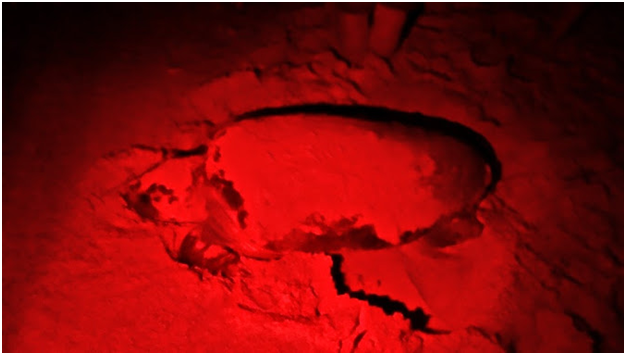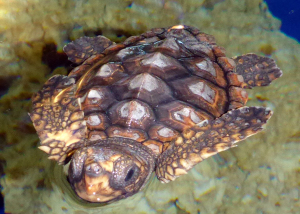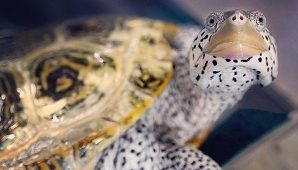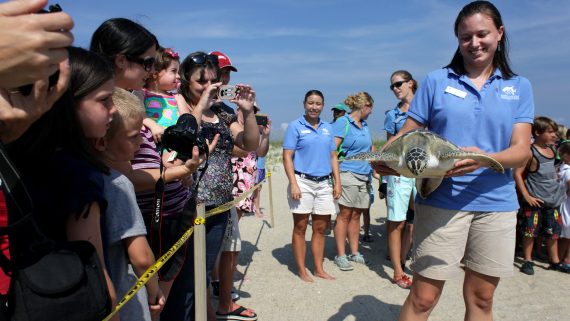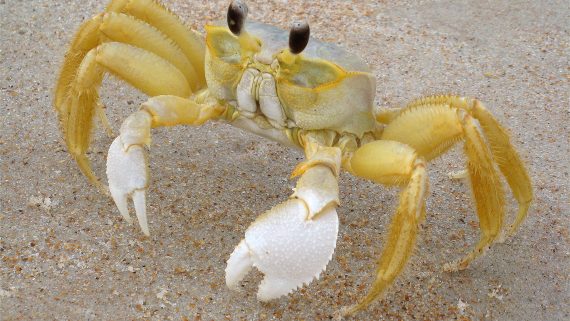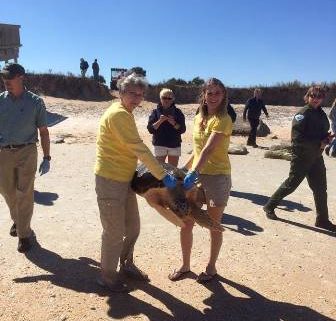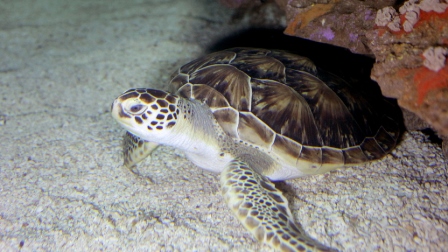Junebug: The Turtle with Three Flippers
This week we have a guest post about a three-flippered turtle nesting off of the Coast of North Carolina.
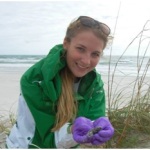 My name is Chelsea Adams. I am the sea turtle monitoring assistant for the North Carolina Coastal Reserve & National Estuarine Research Reserve. It is my job to patrol Masonboro Island daily along with a team of dedicated interns and volunteers in order to both protect and monitor the sea turtle nests laid on the Reserve. I am a recent graduate from UNC Wilmington with my B.S. in marine biology and this is my second year with the Coastal Reserve. I also interned at the Karen Beasley Sea Turtle Rescue and Rehabilitation Center early in my undergraduate career. These combined experiences provided numerous opportunities to work hands-on with these marine reptiles. I have always been passionate about protecting sea turtles.
My name is Chelsea Adams. I am the sea turtle monitoring assistant for the North Carolina Coastal Reserve & National Estuarine Research Reserve. It is my job to patrol Masonboro Island daily along with a team of dedicated interns and volunteers in order to both protect and monitor the sea turtle nests laid on the Reserve. I am a recent graduate from UNC Wilmington with my B.S. in marine biology and this is my second year with the Coastal Reserve. I also interned at the Karen Beasley Sea Turtle Rescue and Rehabilitation Center early in my undergraduate career. These combined experiences provided numerous opportunities to work hands-on with these marine reptiles. I have always been passionate about protecting sea turtles.
Masonboro Island is the largest undisturbed barrier island in southern North Carolina. The Masonboro Island Reserve is made up of 5,653 acres of marsh, tidal flats, and beach which is protected by the North Carolina Coastal Reserve for stewardship, research, and education. When we are dropped off on the island, we walk from one end to the other looking for tracks indicating a turtle was there the night before. We can tell the species of turtle by their tracks. A loggerhead has an alternating track pattern. A green sea turtle moves its flippers at the same time, resulting in a pattern more closely resembling tire tracks. Between individuals of the same species, track patterns usually vary in width but not in pattern…until Junebug.

Tracks from left to right: Junebug (missing a rear flipper), a loggerhead, a green turtle.
Junebug first arrived on Masonboro June 1 and displayed a peculiar dotting pattern down the middle of her track. She returned the following two nights racking up a total of nine body pits. Staff at the Coastal Reserve remained baffled as to what could be causing this unusual track. This prompted staff to reach out to Matthew Godfrey, North Carolina’s sea turtle biologist, who first suggested she may be missing a flipper. It was then obvious to us she was not able to successfully dig a nest and was expending an extraordinary amount of energy trying to complete a task that she could not do alone.
She did not return to Masonboro Island again until June 16t suggesting she may have released her first clutch in the ocean due to her earlier unsuccessful nesting attempts. On June 18 she returned once again, but this time we had a plan for action. In a matter of hours we were able to rally a team of 8 people and we made our way out to Masonboro Island with hopes of finding our dear Junebug. At 11:45 p.m. I was alerted that a group monitoring the northern part of the island had located her. I sprinted nearly a mile to meet them. I approached her slowly and as I got closer I saw that she was in fact missing her rear right flipper, most likely due to a shark bite.
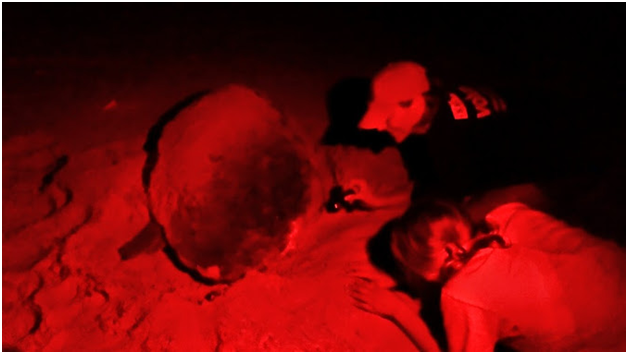
Intern, Averi Ritchie (top), and I (bottom) helping Junebug dig her nest. Note that her rear right flipper is missing. Photo Credit: Mellissa Dionesotes.
We attempted to help her dig her nest for 45 minutes before she decided it was unfit and moved further towards the dunes. During the second attempt, we tried digging faster in order to satisfy her. After an hour and a half of intermittent digging, Junebug successfully laid her eggs.
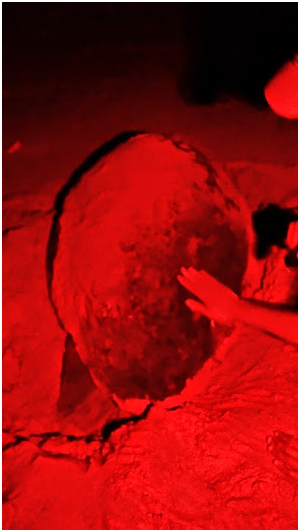
Junebug covering her nest after digging for over two hours.
Photo Credit: Mellissa Dionesotes.
In total, Junebug created 16 body pits before depositing her eggs. She is our mascot sea turtle for this season making up nearly 1/3 of the activity we have seen on Masonboro Island due to the slow nesting season. I am happy to have been a part of such an amazing experience. I find solace in knowing I helped contribute to the addition of one more nest to the North Carolina coast.
What an exciting find! Our sea turtles are living a much less exciting life here at the aquarium. This means they will have a chance to grow big and strong before facing things like sharks out in the ocean. This week Turtle A has grown to be 118.9 grams and 8.6 centimeters long. Turtle B is 138.1 grams and 8.9 centimeters long.
What do you think would be the scariest predator for a baby sea turtle? Share your thoughts in the comments below. Join us next week for a post about a sea turtle predator that would be a great guest for Halloween!


